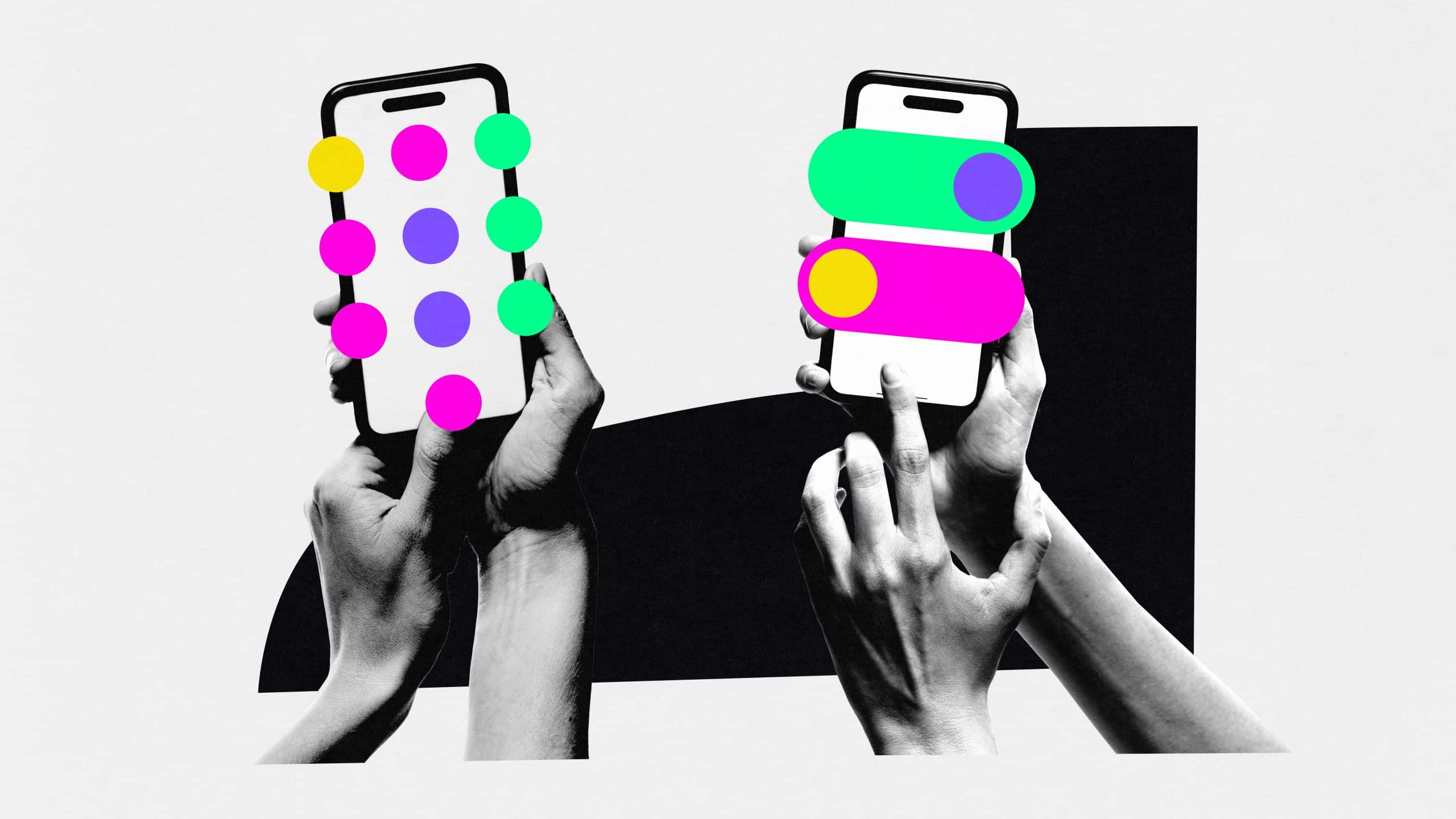What Is User Engagement?
User engagement is the umbrella term for any interaction users have with your brand’s website, such as purchasing a product or completing a lead form.
Since user engagement is so broad and every business is unique, you should decide which user actions are most meaningful to your brand and consider those as the guidelines for benchmarking and evaluating engagement. Start by assessing where your target users are in the funnel.
Why Is User Engagement Important?
User engagement is crucial because it tells you how valuable your products, services, or solutions are to users. Those who value your products become repeat customers, recommend your products, boost your referrals, and upgrade to higher subscription levels. As such, higher user engagement can yield higher conversion rates and, ultimately, revenue growth.
Investing in user engagement can pay off immediately and in the future. For instance, a positive interaction can lead to long-term loyalty, yielding higher conversion rates and, ultimately, significant revenue growth.
For instance, data from Invesp indicates that around 80% of Americans are in loyalty programs, which are synonymous with customer engagement. Once in those programs, those users are 60% more likely to make a repeat purchase.
User engagement sets up your brand for success, allowing you to engage with those users at every step of the funnel.
What Affects User Engagement?
To improve user engagement, it helps to understand the factors that influence it.
Content Quality and Relevancy
Every engagement lost is one that a competitor with better or more relevant content likely won. That’s true whether you’re reaching for a better spot in the SERPs or attempting to capture 30 seconds’ worth of attention from a social media user.
Content quality requires diligent research, a robust, outcome-driven strategy, and content leaders who recognize the value of clean content and unique storytelling.
User Experience (UX)
A good user experience boosts user engagement. A suboptimal one does the opposite. Regardless of your industry, users are generally flush with options. A slow, antiquated or impersonal experience can quickly send a user to the welcoming arms of the competition. When you take the time and resources to analyze and improve the user experience, you invest in customer satisfaction and loyalty.
Personalization and User Connection
Marketers constantly compete for a fraction of a user’s attention. Personalizing content to resonate with each user can foster a long-term relationship and conversions. Efforts to tailor content at the user level, such as targeted product recommendations, curated homepages, custom newsletters, and emails, create a sense of connection and community that is often lacking.
Taboola’s Homepage For You is an excellent example of how personalization can win over users. When implemented, publishers who leveraged this AI-powered tool experienced a 30% to 50% lift in CTR.
Trust and Credibility
Quality content, a reliable UX, and personalized content yield trust. And when users trust the content they’re consuming, they’re far more likely to interact with it and seek out the source for future, relevant needs. They’re also more likely to share their experience with your brand via social platforms.
Investing in authentic story-telling — directly or through partnerships with other organizations or industry influencers — can further solidify trust and credibility. Once users recognize that authenticity, they’re more likely to become loyal to your brand.
Incentives for Engagement
Incentives are what keep users coming back. There’s always a place for traditional incentives — referral programs, discount codes, free shipping offers for repeat business, and the like. But brands that win in the engagement space take the time to understand what drives their audience. Then, they leverage that knowledge to create a true incentive, whether that’s gamifying social platform engagement, influencer recognition for loyal followers, or something specifically unique to your audience.
5 Top User Engagement Strategies
Not sure how to cultivate engagement? Try these strategies to capture your users.
1. Personalized Content
Users engage more with a site, platform or piece of content when their experience reflects their needs and wants. Fortunately, today’s marketers benefit from finely honed algorithms and AI capabilities that can build robust, highly personalized content. Leveraging the data and resources available can help you create content targeted to breed loyalty and confidence.
2. Interactive and Immersive Content
Engagement thrives on interaction and keeping users on the page or in the app. To encourage user participation, incorporate polls, quizzes, videos, or interactive content. Platforms that offer immersive ad experiences, such as native video ads, often see higher engagement rates and deeper connections with audiences.
3. Gamification
Gamification has become to the early 2020s what video was to marketers in the 2010s. Companies including Pepsi, Starbucks and the increasingly present Temu have harnessed this strategy to build engagement and revenue.
Your gamification strategy can be as simple as a loyalty/milestone program or as complex as a multi-level quest. Before you gamify your engagement strategy, complete a thorough audience analysis to help you determine which styles of games and rewards (can’t forget those!) will resonate most closely with your audience.
4. Leveraging User-Generated Content
Engagement only comes with trust. You can build brand trust by amplifying authentic voices. Encouraging customers to share testimonials, reviews, or content featuring your brand fosters authenticity and builds community.
5. Learning What Works Best
The strategies above can increase engagement, but only with ongoing, deliberate and well-tracked testing and performance monitoring. In that sense, testing is a supportive strategy that allows you to pinpoint what works and what doesn’t, building on the knowledge you glean every step of the way. Learn how to do this in the next section.
What Are the Best Metrics for Measuring User Engagement?
Knowing how to measure user engagement is essential to growing your business. Tracking and analyzing metrics that indicate user engagement levels allows you to determine the perceived value of your content, product offerings, or services.
Every business is unique, so there is no single set of metrics to follow. You may want to add others specific to your business, but the four described below will show you where you are succeeding while revealing areas for improvement.
Metric #1: Pageviews
Measuring pageviews is one of the most standard ways to evaluate user engagement. Pageviews indicate how many times a page is loaded or reloaded. Monitoring pageview metrics can help you gain valuable insights into your site, including traffic trends and strategic SEO outcomes.
As a general rule of thumb, higher views indicate users are interested in the page’s content and that the page scores high in SEO.
To see pageviews in Google Analytics 4 (GA4), click on Reports > Life cycle > Engagement > Pages and screens.
Using a tool like SimilarWeb can also help you see how your site’s pageviews and other engagement metrics compare with those of your competitors.
Metric #2: Time on Page
Today, users are bombarded by content, so if you can capture their attention, you’re on the right path to engagement. It takes about 2 minutes for a person to read 500 words. If you have a blog post with 1,000 words and see users spending 3 to 5 minutes on that page, you’ve got engaging content that’s resonating with users.
In GA4, you can know how long a user is on a page or site by monitoring Average Engagement Time. In its current iteration, GA4 offers insight on average engagement time for the following:
- Across your site.
- Per session.
- By page.
You can see these metrics by logging into GA4 and clicking Reports > Life cycle > Engagement > Overview. From there, click on the desired metrics listed above.
Metric #3: Bounce rate
Bounce rate is the percentage of sessions in which a user left your site in fewer than 10 seconds — and without clicking on or otherwise engaging with the page. A high bounce rate can indicate various issues, including a poor user experience or a landing page that didn’t meet user intent.
Low bounce rates suggest that users are engaged with content. When paired with strong engagement times, a low bounce rate means you’re engaging users and providing them with a valuable experience.
To view bounce rates, add the metric to your Pages and Screens report by clicking Reports > Life cycle > Engagement > Pages and Screens. From Pages and Screens, find Report Data and select Metric > Add metric > Bounce rate.
Once added, bounce rates will appear in your Pages and Screens report.
Metric #4: Conversion rate
A conversion can be any action a user completes, such as signing up for an email list, purchasing a product or subscription, leaving a review, or downloading your app. Measuring conversion rates is paramount to successfully building marketing strategies that breed engagement.
The first step in tracking conversions is to determine what defines the event. Once you have defined a conversion, you should set each conversion point as a key event in Google Analytics.
You can set up key events by clicking Admin and selecting Property settings > Data display > Events. From the events window, choose Create event > Create. Enter your preferred event name, such as “email_campaign.” Then, follow the prompts, choose the conversion conditions and select Add.
How to Improve User Engagement
You can improve user engagement by taking all the data you collect and using it to inform your engagement strategy. For instance, data may indicate that customers prefer a specific type of content or follow a common pattern — such as using a chat feature — before completing a purchase. Likewise, you may find implementing a free shipping offer lowered your abandoned cart rate or increased order values.
On the other side of the scale, consider a survey of your most engaged users to help you identify their disengagement tipping points: high prices, lack of variety, or too many steps to complete an action, for example. Use those results to test strategies with active users.
Increasing user engagement isn’t a straightforward task. Still, some tried-and-tested strategies deliver every time. Consider one of these improvement strategies if you’re experiencing an engagement issue.
Improvement strategy #1: Personalized on-site experiences
Taboola’s solution for user engagement for publishers utilizes a predictive engine to personalize on-site experiences. This keeps users on-site longer and encourages them to return more often. You can use Taboola to recirculate your organic content and funnel users towards high-value pages.
Taboola’s ‘Read More’ buttons are an ideal way to engage mobile users. Publishers see an average of a 20% uplift in CTR for sponsored and organic content recommendations that sit below the button.
Improvement strategy #2: Engaging content
Users are hungry for great content, so feed that appetite to increase engagement. Whether you are creating blogs, podcasts or videos, consistently provide helpful, valuable, and engaging stories and content.
For instance, video content can lead to substantial engagement gains, with data from Aspiration Marketing indicating that videos can yield a 1200% increase in shares.
Interactive content and infographics are extremely effective at engaging users. According to recent data from Search Logistics, infographics are 30% more likely to be read than written articles. Further, articles incorporating infographics generate over 170% more inbound external links, which can lead to increased reach and engagement.
There are numerous ways to create or improve your existing content. Key metrics, such as bounce rate and time on page (see above), can help you determine which types of content work best for users at various stages of the funnel.
Improvement strategy #3: Seamless user experience
Giving users a smooth, engaging website experience will increase conversions and revenue. To reach that goal, leverage conversion rate optimization (CRO).
Start by examining your analytics to identify what might drive or stop people from completing a specific action, such as the checkout process. Then, start A/B testing your hypothesis, changing one element at a time and evaluating the results.
Test every element of your site. You might find that tweaking a page layout, changing the color of the text on a button, or moving the CTA to a different place generates higher conversion rates.
How to Leverage User Engagement to Enhance Performance
User engagement isn’t just about keeping users active on your site or platform — it’s a valuable tool for optimizing overall business performance. Analyzing how users engage with your page and integrating user patterns and feedback can help you refine your marketing strategies, improve your product offerings, enhance customer satisfaction, and ultimately increase your conversions.
Here are a few ways you can start to leverage engagement to enhance overall performance:
Keep Track of and Analyze Engagement Data
Engagement data becomes especially powerful when aligned with bottom-line KPIs. Metrics like time on page, CTR, and conversion rate help you understand what’s resonating, while ROAS, CPC, and CPA ensure you’re spending efficiently.
Tip: Monitor CTR to identify which creative and messaging spark the most engagement. Leverage tools like Taboola’s Creative Insights to A/B test and double down on high-performing variants. Then, layer in ROAS and CPA to ensure those clicks are translating to cost-effective conversions.
Optimize Conversion Funnels Using Engagement Insights
Engagement doesn’t always translate to conversions. User drop-offs can signal a messaging misalignment or issue such as vague CTAs, slow-to-load pages, or unnecessarily complicated checkout processes.
Tip: Review conversion rate alongside CTR. A strong CTR with low conversions typically means your landing page isn’t meeting expectations. Align your ad copy and creative with the page experience, reinforce your value proposition, and simplify your CTAs to reduce friction.
Personalize User Experience Across Channels
It’s easy for customers and site users to feel like “just another number,” adding to your site traffic and CTRs, but a little customization can go a long way in helping find value in your site and product.
Tip: Use engagement data to refine personalization strategies and segment campaigns by audience and funnel stage. Bid more aggressively on high-intent users to boost ROAS, and personalize content using AI-powered tools like Taboola’s SmartBid to dynamically adapt based on behavior.
Bring Insights to the Product (Or Service) Level
So much of the data we track is used to analyze the customer’s journey and improve their online experience, but engagement data can also drive product and service improvements. That can be especially true if you’re experiencing high engagement but low conversions.
Tip: User behaviors can provide insights into product preferences and feature demands. Use insights to refine offerings, reposition messaging, or introduce new solutions better aligned with user demand — all while tracking conversion rate and CPA to ensure profitability.
Boost Retention with Strategic Engagement Tactics
Customer acquisition can be costly, and that money is easily wasted if you don’t spend time (and resources) establishing customers. Further engaging those customers is key, as those who are engaged are far more likely to turn into repeat customers. However, engagement can also be stifled by stale campaigns or overused tactics.
Tip: Combat ad fatigue by rotating creative regularly and setting frequency caps to prevent overexposure. Use engagement and impression metrics to identify where you’re gaining (or losing) visibility, then scale budgets or bids to maintain momentum and grow your share of voice. Further, explore common tactics in the context of your user engagement data and platform capabilities to determine if retention tactics like loyalty programs, gamification, exclusive perks, or immersive content will work for your brand.
Key Takeaways
Measuring and improving user engagement is a long-term strategy involving constant data analysis and ongoing initiatives to apply your knowledge. Engaged users often represent the smallest portion of users, but they’re the group most likely to generate conversion and providers. Optimizing your user experience to increase engagement is wise.
Set up your technology stack to include Google Analytics so you can easily access your data and add additional solutions that offer value and insights. Numerous top-tier publishers use Taboola’s Audience Engagement platform because it delivers on its promise of increasing user engagement.
Remember that to start this journey, you must first define the thresholds that indicate an engaged user, then focus on the most meaningful metrics for that user. Test, measure, and test again to find that sweet spot that brings the most user engagement, and you’ll be on your way to growing a profitable business.
Frequently asked questions (FAQs)
User engagement vs. customer engagement: What’s the difference?
User engagement refers to how actively an individual interacts with your brand on a specific platform, such as your website, app, or social media account. However, users aren’t necessarily paying customers, and user engagement metrics reveal how individuals spend their time on your page, site, or app.
As the term suggests, customer engagement is specific to users who have completed a purchase or other conversion task, such as signing up for a webinar or completing a lead form.
Understanding user engagement can help you get a look at the marketing funnel from the top down. Customer engagement data can help you better understand your customers, including loyalists, and implement marketing strategies that foster ongoing relationships.
What is a good user engagement percentage?
Depending on your industry and the platform, a good engagement rate is typically 1% to 6% or higher, though that can vary by industry, audience size, and platform. One rule of thumb defines good as 3% or higher; excellent requires an engagement rate of 6% or higher.
According to recent Hootsuite data, brands in the Consumer Goods & Retail space have an average Facebook engagement rate of 2.3%. That number is nearly doubled for brands in the Healthcare, Pharma and Biotech space, which has an average Facebook engagement rate of 5.9%
What are the four pillars of customer engagement?
The four pillars of customer engagement are
- Personalized content. Creating customer-tailored messaging, experiences, landing pages, etc., creates value for new customers and entices loyalty among existing customers.
- Quality content. Whether you’re designing personalized emails, social campaigns, or a library of evergreen pages, your content must be accurate, valuable, and relevant.
- Consistency. Brand consistency may be easy to overlook, but it creates credibility and trust. Maintain consistency in messaging and brand identity across all channels, including social media, your website and, if relevant, your physical location.
- Customer feedback and response. Encourage users to share and act upon their feedback to ensure they’re heard. You can garner feedback through essential product/service review opportunities, surveys, and social media engagements.



